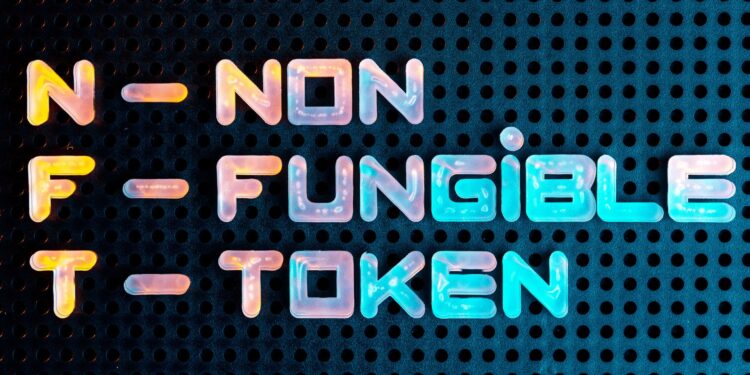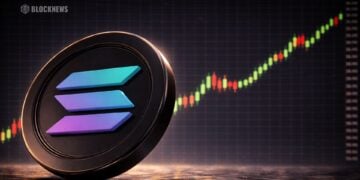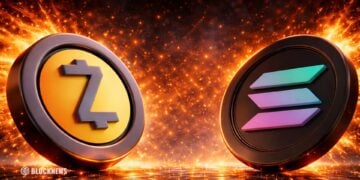What are they?
Although the actual definition is kind of ‘blah,’ NFTs are pretty incredible tech. But, just to get the relatively dry definition out of the way: an NFT, or Non-Fungible Token, is a unique digital asset created using blockchain technology that can be tied to digital art, music, videos, or many other forms of creative work. These tokens are a digital representation of genuine ownership, securely recorded on the blockchain. Hence, an NFT can essentially turn digital works into verifiable and tradable assets. Snooze. Now, for the good stuff continue reading so you can see why these NFTs continue to create buzz and generate millions of dollars despite confusing a massive portion of the population.
NFTs vs Cryptocurrencies
Cryptocurrencies and NFTs (Non-Fungible Tokens) are digital assets that utilize blockchain technology, but they have different purposes and properties.
Cryptocurrencies, such as Bitcoin and Ethereum, are fungible tokens. This means each unit or ‘coin’ is identical to every other unit, much like a dollar bill. They’re used as a medium of exchange, a unit of account, or a store of value. They can be divided into smaller units (like how a dollar can be divided into cents), and one coin is indistinguishable from another of the same type.
On the other hand, NFTs are non-fungible tokens. This means each token is unique and can’t be replaced with something else. They’re typically used to represent ownership of a unique item or piece of content, such as digital art, music, virtual real estate, or other digital assets. Unlike cryptocurrencies, they can’t be divided into smaller units; you buy, sell, and own them whole. Each NFT has distinct information or attributes that make it unique and, thus, potentially valuable in its own right.
How did they begin?
Arguably, the concept of NFTs was first proposed in 2012/2013 by Colored Coins, a company that aimed to allow people to create digital assets on the Bitcoin blockchain. Although Colored Coins fit the definition of an NFT, it is widely accepted now that artist Kevin McCoy and collaborator Anil Dash created the first NFT, Quantum, in 2014. However, it wasn’t until the launch of the Ethereum blockchain in 2015 that NFTs began to make a move. Contrary to what some Cryptopunk holders may say, the first project on Ethereum was ‘Etheria’. It launched in November of 2015 at Ethereum’s first-ever conference, DEVCON 1. In 2017, the CryptoKitties game was launched on the Ethereum blockchain, which enabled players to buy, sell, and breed unique digital cats. This was the first major use case for NFTs, and it quickly became wildly popular, causing congestion on the Ethereum network and driving up transaction fees.
Photo credit: etheria_feed
Did they just explode after that?
No, but they did start to gain momentum. In the subsequent years, the applications for non-fungible tokens (NFTs) witnessed an expansion, thanks to the advanced smart contract capabilities of Ethereum, enabling the creation and management of intricate and sophisticated digital assets. In 2018, a groundbreaking event took place—the first-ever auction of a tokenized fine art piece featuring an Andy Warhol painting. The following year, the NBA introduced NBA Top Shot, a platform that revolutionized the buying, selling, and trading of unique digital collectibles in the form of basketball highlights. It quickly gained immense popularity, generating sales exceeding $500 million by the close of 2020.
Photo credit: NBA Top Shot
During this period, the NFT market experienced remarkable growth, although it remained relatively small initially. NonFungible.com reported that in 2018, the total market capitalization of NFTs stood at approximately $41 million. By the conclusion of 2019, it had surged to around $140 million. 2020 witnessed an explosion in the market, propelling the total market capitalization to over $338 million by year-end.
Why are Some Worth Millions?
One of the reasons they are so exciting (and not ‘blah’) is because they can be worth a lot of money. But why? It really boils down to the value attributed by buyers – it could be due to hype, scarcity, or appeal, among other things. One of the more famous instances goes back to March of 2021 when the digital artist Beeple sold a single NFT for $69 million at a Christie’s auction. That number is still incredible for an NFT purchase today.
Photo credit: The New York Times
Should we still buy them?
Some people think the bubble has burst and the fad is over. That’s hardly the case, and you can be assured that the market will continue to grow as we begin to tokenize everything. Many retail investors, institutions, and governments strongly believe in the underlying technology, so they’re truly not going anywhere – in fact, they will be everywhere eventually. The NFT space is so vast with options that it wouldn’t hurt to simply take a look. There’s something for everyone.
Notably, even in the bear market, a huge NFT art sale made the news in the summer of 2023, with a Fidenza NFT #545 sold for US$1.15 million (625 ETH).
Photo credit: Lucky Trader
If you’re still not convinced, take a look at the numbers listed further down the article.
Why do I need to do my ‘DD’?
Ah, yes, due diligence…this is something too many NFT enthusiasts tend to avoid. Most prefer the “ask your degen buddy where he’s putting his money and do the same” approach. Investing in NFTs requires careful consideration due to their unique nature and market volatility. These digital assets offer a new avenue for ownership and investment, provided you have a strong understanding of the market and a genuine interest in the asset. However, one must be prepared for the inherent risks associated with such investments, including wide price fluctuations and the potential to lose the entire investment. Thorough research into the creator, authenticity, and potential value of the NFT is crucial, as well as understanding the long-term prospects of this relatively new asset class.
There are additional factors to consider with NFTs that differentiate them from traditional assets. The environmental impact is one such factor, with many NFTs built on energy-consuming blockchains leading to sustainability concerns. Another is the ongoing development of legal and regulatory structures for NFTs, which could significantly impact their future value and legality. Liquidity is another concern, as the demand for individual NFTs can vary greatly, potentially making it difficult to sell them at a desired price.
How do you buy them?
Typically, you’ll need to download a ‘digital wallet’ and get some funds into it. There are tons of ‘how-to’ videos and guides online to get you started. It’s actually pretty straightforward – as easy as downloading an app for your phone. Once you get some funds into your wallet, you’ll head over to a popular marketplace like Opensea, Blur or MagicEden and start shopping.
Can’t I just Copy Them?
Sure, you can be that person who right-clicks a million-dollar NFT to prove a weird point, but all you’re doing is pretending you own it. Owning the actual NFT grants you unique and provable digital asset ownership, giving you a sense of authenticity and exclusivity that your copy can’t replicate. Additionally, NFTs often come with additional benefits, such as access to exclusive content or experiences, providing added value and incentives for ownership.
How do they work?
Many people ask this question, but it should be phrased more like, “What can I do with them?”. And the answer is…almost anything. That’s the magic. However, if someone had to explain how they work, this may be the easiest way to describe it in a list:
1. You buy a NFT you like, and it will give you access to utility.
That’s it. You get utility, but what is that, you ask? The ‘utility’ associated with an NFT varies from access to exclusive communities, real-life events, more NFTs, video games, and so much more. It helps to research the NFT project in advance to see if you’re interested in the offerings. A lot of people will join a platform like Discord to see what ownership provides – or doesn’t.
Here are a few examples of what you can expect in terms of utility:
- Exclusive network of like-minded individuals
- Sniping tools
- IRL Events and hangouts
- VC fund investment opportunities
- Music NFTs that royalty share
- Money grants toward holder biz proposals
- Real land purchases tied to NFTs
- In-game land rental income
Will NFTs ever be mainstream?
Do you mean like: will your grandma own a quilt NFT, or your backwoods buddy own an NFT that’s all business in the front but a party in the back? Well, there are a couple of ways to look at it. One way is we can assume that we’ll continue along the same trajectory, which is upward, according to Dune Analytics. The other way to look at it is from a ‘tokenization of assets’ perspective. These ‘tokenized assets’ will be non-fungible in most cases, which takes us to the next question.
So what is the tokenization of assets?
Although this may come across as super dry, it’s a really important take on the future of NFTs and NFT ownership. The tokenization of assets refers to the process of converting ownership rights of a real-world asset into a digital token on a blockchain. In recent years, the tokenization of real-world assets (RWAs) has gained momentum, with these assets being used as collateral or for new investment opportunities in the decentralized finance (DeFi) space. Traditional funds and asset issuers have launched programs to tokenize various types of assets, including real estate, commodities, private equity, credit, bonds, and art, via public crypto networks.
Photo credit: Laptopmag
Tokenizing RWAs offers a range of benefits, including lower investment minimums, increased access through fractional ownership, enhanced trading of previously illiquid assets, and improved transparency and security, as the blockchain records an immutable transaction history.
NFTs are used in the tokenization of assets to represent ownership of a specific asset. For instance, on Centrifuge Tinlake, someone can convert a real-world asset into an NFT and include the associated legal documentation. The NFT then acts as collateral representing the RWA.
However, while tokenization presents new opportunities, it also comes with risks. For instance, Maple Finance had a $36 million loan default in one of its lending pools in December 2022. Therefore, when evaluating yield-generating opportunities, it’s important to consider the track record of existing DeFi applications that leverage real-world assets, their underwriting and due diligence processes, and how they manage risk.
I thought the future would be more like “Ready Player One”!
Photo credit The Spectrum
Of course, you did. It’s awesome. The world of “Ready Player One” is an undoubtedly cool virtual reality showing how digital assets and experiences could play a major role in a (hopefully not dystopian) society. If you watch this movie with NFTs in mind, it’s perfectly fitting and kind of exciting. And guess what – there is something along those lines already in the works. Shoutout to The Readyverse.
NFTs could be used to verify ownership of virtual goods, property, or experiences in virtual environments. Already, we are seeing early versions of this with NFTs being used for virtual real estate in digital worlds, unique digital art pieces, and other unique virtual assets. And, if Apple has any say in it…
However, it’s important to note that significant technical, societal, and regulatory challenges would need to be overcome for this vision to fully materialize. This includes developing virtual reality technology to the point where it’s immersive and widely accessible, creating a stable and accepted system for digital ownership and commerce, addressing a wide range of legal and ethical questions related to virtual interactions and ownership, and much more.
Is the NFT boom over?
It’s time to take a look at the numbers. We’ll try to keep it short and to the point.
Based on the data from the 2023 NFT Market Analysis by NFT Daily Dose, it’s clear that the NFT market has seen some fluctuations but still shows signs of continued growth and evolution.
NFT trading volume saw a sharp increase in Q1 2023, driven by incentives and airdrops from platforms like Blur, but then it declined. The number of NFT holders also dropped to its lowest point in the last 12 months on April 19, with just 11,187 traders. However, the overall number of holders increased by about 12.62%, reaching around 4.3 million by April.
Over the past two years, the NFT market cap and the number of NFT holders have increased by 10-fold. However, the NFT market is still relatively small, accounting for approximately one-tenth of the total ETH market cap. The continued expansion of the NFT market suggests a significant potential for future growth and adoption.
So, in summary, while there have been shifts and fluctuations, it appears that the NFT market is still very active and evolving. New trends, innovative projects, and ongoing developments in the broader blockchain ecosystem are likely to continue driving growth in the NFT market.
What do you think will happen to your NFTs in 100 years?
Well, there are a few things to consider in this regard, like how they are stored and can that storage be compromised.
NFTs, or non-fungible tokens, are not stored in the same way as a file on your computer. Instead, they exist as entries on a blockchain. When you purchase an NFT, you’re really buying a digital token that serves as proof of ownership and authenticity of a particular item. But, the actual data for what the NFT represents is typically not stored on the blockchain itself due to cost and inefficiency. Instead, the NFT contains a reference to the location of the data on a separate system.
For instance, the data might be stored on a traditional server, or it could be stored on a decentralized file storage system like the InterPlanetary File System (IPFS). IPFS is a protocol and network designed to create a content-addressable, peer-to-peer method of storing and sharing hypermedia in a distributed file system.
However, it’s important to note that there are potential risks with this setup. If the location that the NFT points to ever goes offline or the data is removed, the NFT could end up pointing to a dead link, rendering the token essentially useless. This is sometimes referred to as “link rot.” As for the ownership records of the NFTs, they are stored on the blockchain. This is why you need a digital wallet to buy, sell, or trade NFTs.
I keep hearing about massive scams. What is happening exactly?
This can be a tough situation since you may become overwhelmed by the belief that a project will get you Lambo. It’s crucial to establish a due diligence checklist and remain committed to it.
If your due diligence checklist had ‘founder anonymity’ as a metric, you may have been able to avoid the Pixelmon fiasco. It consists of 10,005 pixelated character NFTs that were launched on February 7, 2022. The project was initially able to build a massive following by promising an open-world adventure game similar to Minecraft and Pokemon. With a team supposedly consisting of former Disney and Activision employees, expectations were high – and the Dutch auction-style mint starting at a whopping 3 ETH bolstered this expectation.
The project sold out within an hour of launch, collecting over $70 million. However, doubts soon arose as the team remained anonymous, details about the promised metaverse game were vague, and the NFT art was still undisclosed. Secondary sales dropped to around 1 ETH shortly after the launch.
Photo credit Metaversal
There was another notable rug pull where the Department of Justice got involved. The creator of another ape-themed NFT project, Baller Ape Club, faced some legal troubles. The DOJ ended up charging the project’s founder, Le Anh Tuan, with the intent to commit wire fraud topped off with a little money laundering.
According to allegations, Tuan was accused of deceiving investors of the Baller Ape Club, resulting in a loss of $2.6 million. She launched the collection, deleted the website, and started laundering the funds. She essentially got caught ‘chain-hopping’ the crypto in an effort to hide it all.
Some other smaller scams and rug pulls of note include the Evil Apes ($2.7 million), Big Daddy Ape Club ($1.3 million), and Frosty’s Freeze ($1.3 million).
How weird can an NFT get?
When boundless creativity takes the stage, one can only imagine the extraordinary ideas that emerge. Here’s a glimpse of some of the finer examples:
A Twitter user named Lauren Walker jokingly tweeted about ‘appropriating’ a series of NFTs by simply right-clicking and saving the associated images. Unexpectedly, some NFT enthusiasts had the last laugh when they created NFTs out of screenshots of her tweet and then sold them on Opensea. They brought in about $5000. Not bad.
In a perfect example of what it means to try too hard, Berlin-based Look Labs created the world’s first digital fragrance. Apparently, their NFT used infrared to capture the characteristics of a physical perfume, including its bottle and label. The collected data was then transformed into a unique digital artwork. This NFT was sold for $18,000 and included a limited edition of the physical fragrance.
If that isn’t enough, Charmin made it funny with their toilet paper-themed tokens. Shockingly, some sold for over $4000, and came with a “physical display”. Proceeds went toward the humanitarian organization “Direct Relief”. On a side, do you know how much toilet paper $4000 will buy you? Approximately 5400 rolls (pre-pandemic, of course).
Photo credit The Vergel
Can you end this on a bright note?
Gladly. NFTs and NFT ownership offer numerous benefits, but this is probably the most inspiring way to think of them. Consider how asset ownership can be a way out of poverty for the 2.5 billion unbanked individuals globally who lack access to traditional banking systems. Cryptocurrencies and NFTs revolutionize this situation by providing these individuals with wallets, enabling them to participate in digital marketplaces, create art, music, and games, and obtain business financing. This newfound opportunity allows them to generate wealth and contribute to the economic well-being of their families and communities.
The digital economy transcends state and national boundaries, operating without physical or logistical limitations. Virtual communities and platforms facilitate value exchange at minimal operational costs. Notably, content on NFTs cannot be censored, as no institution, corporation, or government has the power to control or suppress blockchain content. The decentralized nature of NFTs ensures that data remains intact even if specific applications are shut down, with new decentralized apps seamlessly taking their place. This represents the purest form of freedom of speech on the internet.
NFTs are a good thing.














